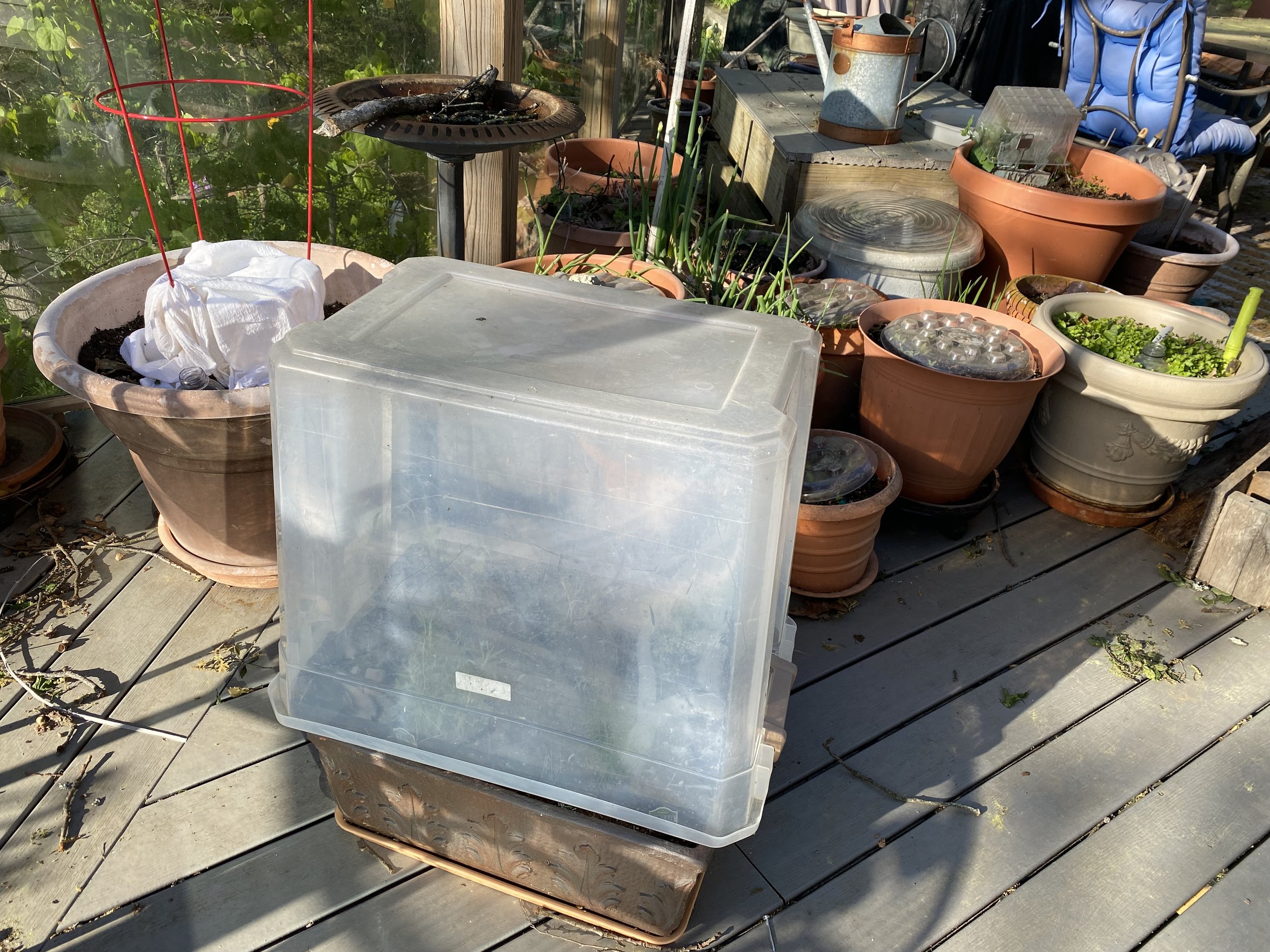Cicada Season
/US Forest service map shows the various 2024 cicada broods. (charlotte ekker wiggins photo)
Cicada Season 2024
After the April 8, 2024 solar eclipse, there is another natural event that will be a tourism boost. I’m talking about the joint emergence of two cicada broods, Brood XIX on a 13-year cycle and brood XIII on a 17-year cycle. Some entomology friends plan trips to areas where they will converge while some media taunt it as the invasion of the decade. To many Midwestern animals, plants, and microbes, they will be a rare feast, altering the ecosystem balance for this season.
This year the cicada emergence will be a once in two centuries event. The last time that these broods swarmed aboveground together, Thomas Jefferson was president and there was no city of Chicago.
I remember finding their little empty body cases last year throughout the garden. Cicadas live underground sipping water from tree roots. They emerge at night, climbing up on the sides of trees, poles, walls, etc., where they molt into adults. From that point forward, they: find a partner and mate, lay as many eggs as possible, and die. Typically, the process takes 4-6 weeks.
So where will the two broods jointly appear?
“Illinois is going to be ground zero,” according to John Lill, insect ecologist at George Washington University. “From the very top to the very bottom of the state, it’s going to be covered in cicadas.”
How Cicadas Damage Plants
After mating, the female lays eggs on branches by slicing through the bark and depositing the eggs. The slicing can cause young tree branch damage. Larger trees can absorb the damage.
Protecting Plants
Depends on how young your trees are and whether you worry a lot. Some experts say 7-10 days after a heavy emergence of cicadas, create a physical barrier to prevent the female from laying eggs. Cover your plant with netting and tie at the base of your plant with a zip tie. Choose mesh or mosquito netting that allows water and sunlight to reach your plant. For smaller shrubs, drape netting over the shrub and anchor to the ground.
Leave your covering on your plants until most cicadas have died off, which usually is about 3-4 weeks.
Hose cicadas off plants. Skip chemical sprays, they don’t work and damage beneficial bugs.
Pruning Plants After Cicada Damage
If cicadas have damaged your tree or shrub, prune the affected branch tips within 4-6 weeks of when the eggs were laid into the branches. By destroying those pieces, you can eliminate some of the eggs from hatching and the larvae falling back into the turf.
How to Manage Through Cicada Season
If you want to keep windows open during the cicada season, make sure your windows have properly fitted screens.
When walking outside, take an umbrella, wear a hat, and tie back long hair. Cicadas are clumsy flyers and will run into anything including people. Ask me how I know having bugs in your hair is not recommended.
Cicada as Food
Why yes, cicadas are protein-packed and I’m told taste like “high end shrimp.” Cicadas are related to shrimp, crayfish, lobsters and other arthropods. If you’ve even eaten those, you’re just a step away from trying cicadas.
How to Eat Cicadas
They have to be out of their shells so watch them climb trees and molt to gather. Make sure they haven’t been exposed to turf grass treatments and other chemicals.
Blanch in boiling water for one minute, then store in zip lock bag in freezer before cooking. One easy way to try them is topping a salad like you would shrimp with extra virgin olive oil, lemon juice and cracked pepper.
For more gardening, beekeeping, cooking and easy home decor tips, subscribe to Garden Notes.
Charlotte











